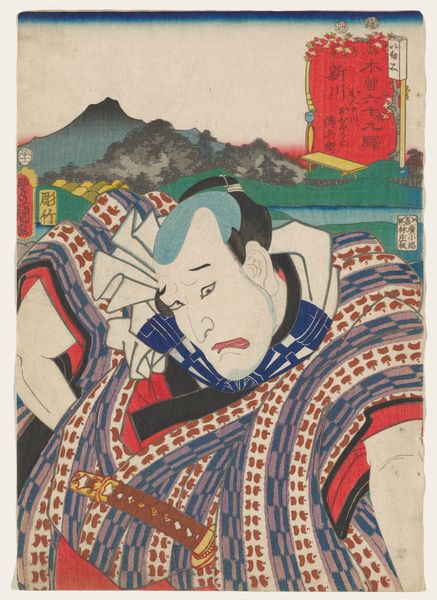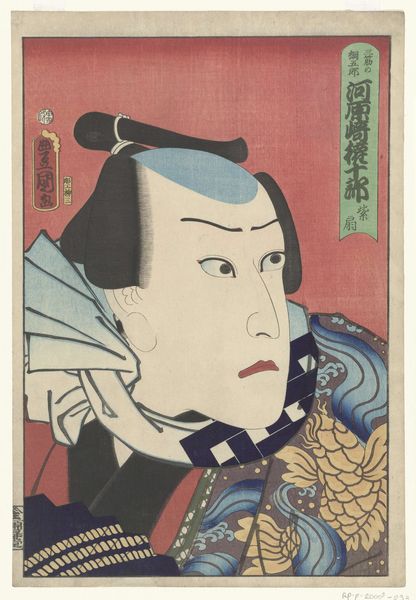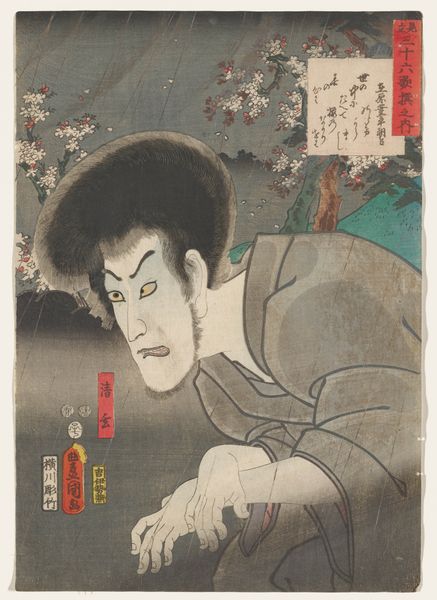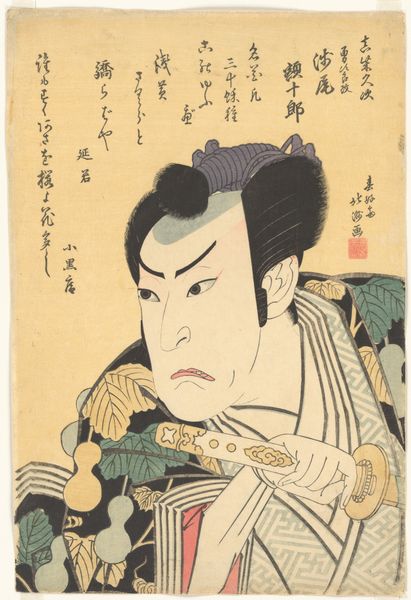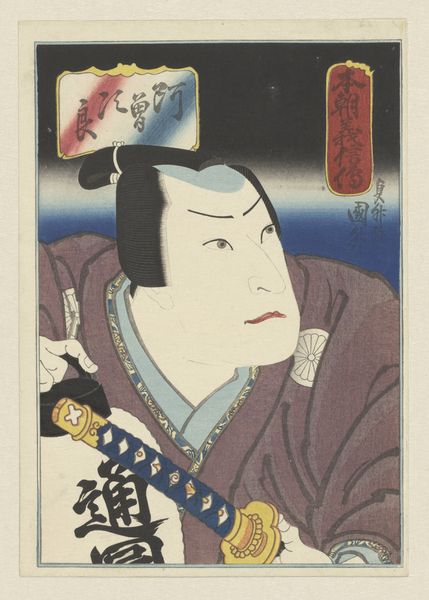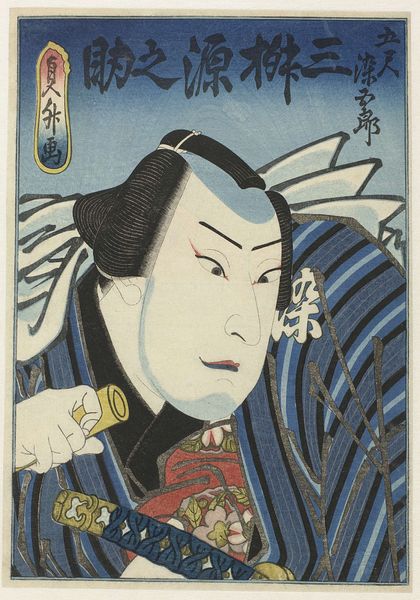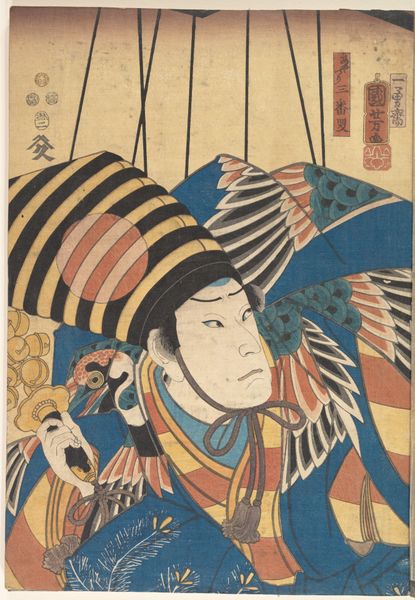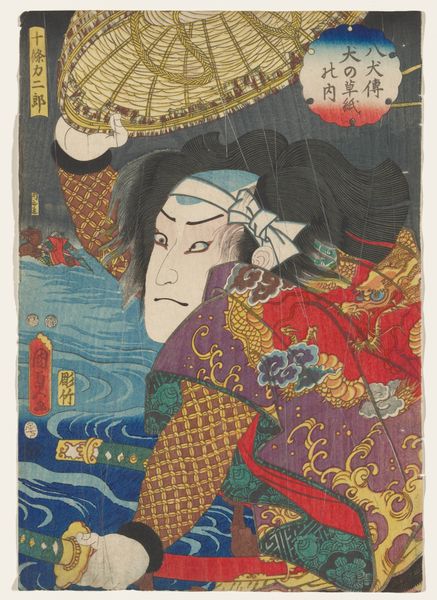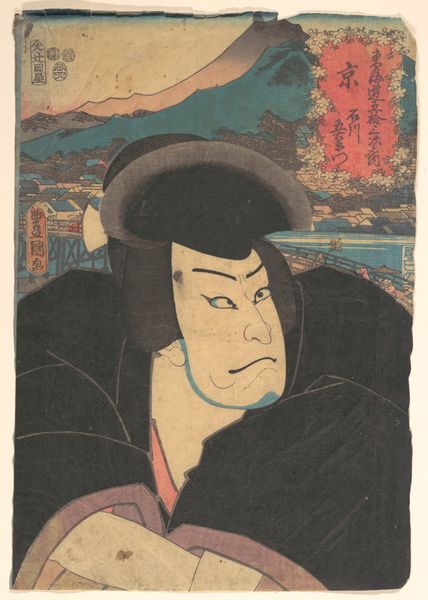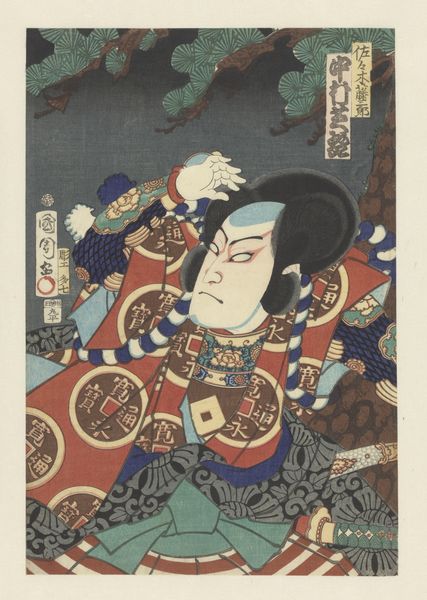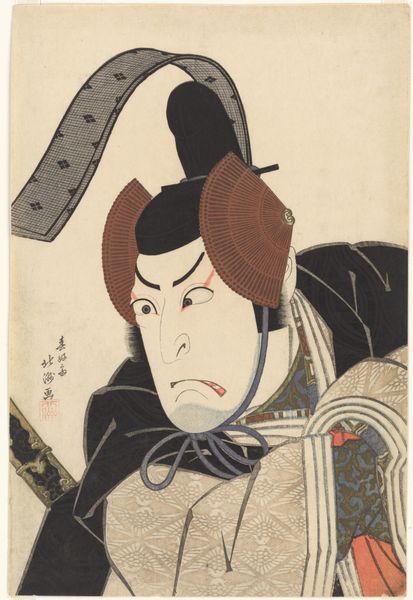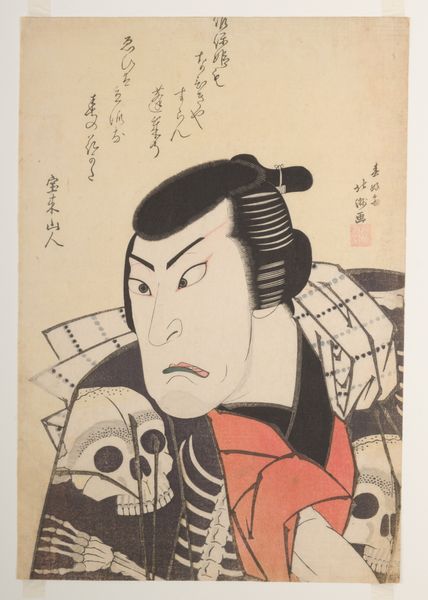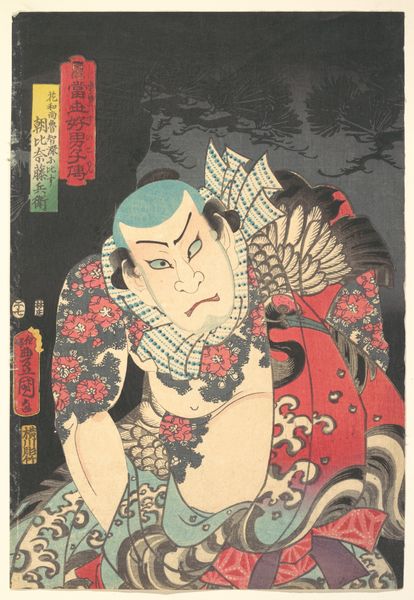
Poem by Ōnakatomi Yorimoto- (Actor Ichikawa Ebizō V as) Kiichi Hōgen Possibly 1852
0:00
0:00
print, ink, woodblock-print, woodcut
#
portrait
# print
#
asian-art
#
ukiyo-e
#
japan
#
ink
#
woodblock-print
#
woodcut
#
genre-painting
Dimensions: 14 × 9 3/4 in. (35.56 × 24.7 cm) (image, sheet, vertical ōban)
Copyright: Public Domain
Curator: Immediately, I'm struck by the actor's defiant stare—it hints at some deeply entrenched societal tension, a confrontation with expectations maybe? Editor: Here we have "Poem by Onakatomi Yorimoto- (Actor Ichikawa Ebizo V as) Kiichi Hogen", possibly created around 1852 by Utagawa Kunisada. This woodblock print showcases not just artistry but also the actor's crafted persona, his identity presented through material means. Curator: Yes, the performance of identity here is multilayered. This isn't simply a portrait; it's a representation of an actor embodying a character, referencing classical poetry, all within the rigid social constructs of the Edo period. What power dynamics are being explored? The use of dramatic roles to subtly critique authority was a powerful tool. Editor: Precisely, and look at the materials. Woodblock printing was a commercial medium; these images circulated widely, democratizing art and, with that, social commentary. The specific pigments, the way the ink sits on the paper - it's all part of a material process tied directly to access and consumption. Curator: And the visual language itself. The exaggerated facial expressions, the bold outlines – they conform to the stylized conventions of ukiyo-e, but it’s also a visual rebellion against the limitations placed on artists. This vibrant genre allowed narratives about class and social structures that might have otherwise been censored to appear. Editor: It's also intriguing to think about the wood itself, the labor involved in carving those blocks, the skill required for such intricate detail. These details reflect the artisan culture integral to Edo-period artistic production. There's a material history encoded within the print itself, representing specific roles within Japanese society. Curator: I am looking beyond just Japan, I believe this reflects what all humans throughout history encounter within rigid structures that stifle free expression and equity, these actors served as our means of catharsis in challenging roles of status and those who defied their roles in society. Editor: Thinking about the lifespan of this artwork, and what all has happened throughout it, and it still resonates within this gallery, in our own consumption and interactions with Japanese art, shows we're also adding layers of materiality as the consumption continues into a full life-cycle for the art. Curator: Absolutely, it brings to light the ever relevant struggle of gender, race, and class. This one print manages to connect so many powerful statements. Editor: The material and the message - inextricably linked. I never grow tired of how one image made this way becomes bigger than all that made it possible, becoming so much more within its existence.
